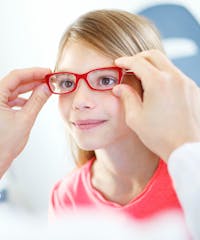
Exploring Solutions for Vision Progression in Children
Pediatric eye care is a vital tool to monitor the health of your child’s vision. We know first-hand how powerless it feels to watch your child’s vision worsen over time. Glasses are a common solution to provide clear vision, but glasses do not prevent vision from changing. There are now more options available than ever to slow or stop the progression of worsening vision, especially nearsightedness, in children.
Understanding Myopia
Nearsightedness, otherwise called myopia, is a vision condition where objects in close range appear clear, but objects in the distance are blurred. Evidence in the scientific literature suggests that some novel contact lens designs and eye drops may slow the progression of nearsightedness in children.
There are currently three treatment methods that we offer to potentially slow the progression of nearsightedness in children:
- Corneal reshaping
- Multifocal contact lenses
- Atropine drops
As explained below, each treatment has its own risks.

Corneal Reshaping (Orthokeratology)
Corneal reshaping contact lenses are worn during sleep and removed in the morning. They temporarily change the shape of the cornea, so that your child can see clearly all day long without glasses or contact lenses. During the first two weeks of overnight lens wear, your child will experience changing vision. When the vision gets worse, they may put on glasses to provide clear vision.
Multifocal Contact Lenses
Soft and rigid gas-permeable multifocal contact lenses are worn in the daytime and are routinely used to help people over 40 years of age read clearly, as well as, see far away. Children may not see quite as clearly with these contact lenses as other types of contact lenses, but there are no additional risks compared to regular daily contact lenses.
Atropine Eye Drops
Atropine is an eye drop that typically makes lights seem brighter because it makes the pupil (black hole in the middle of the eye) bigger, and it blurs near vision because it reduced the ability of the eyes to focus while looking at near objects (including text). Low concentration (0.01%) atropine has been shown to significantly slow the progression of nearsightedness without increasing pupil size or decreasing near vision dramatically.
We know how important your child’s vision is, so we provide financing for all available vision correction procedures. Book your evaluation today!
